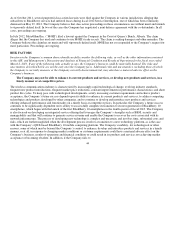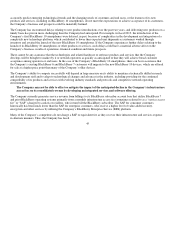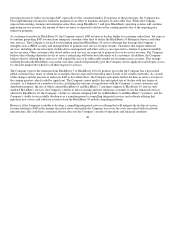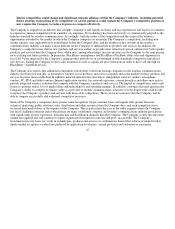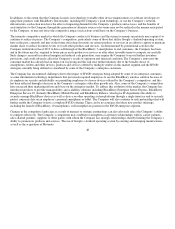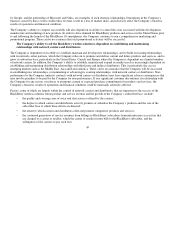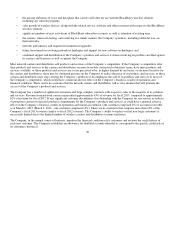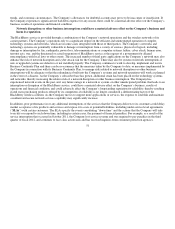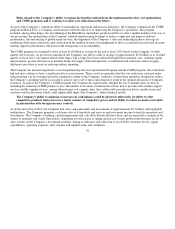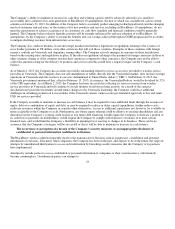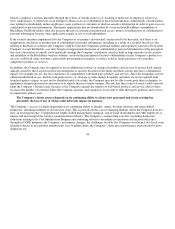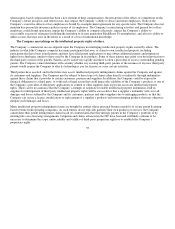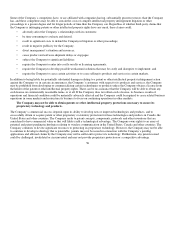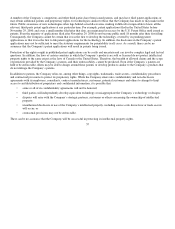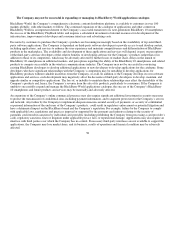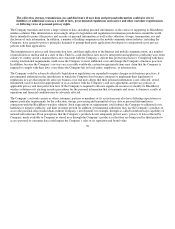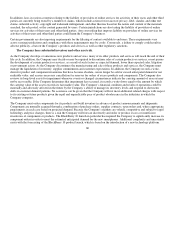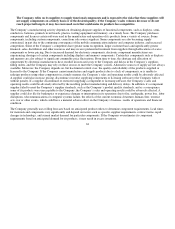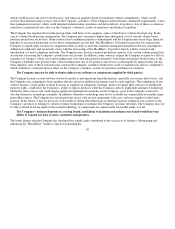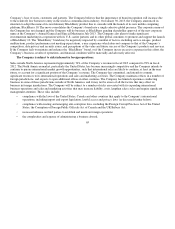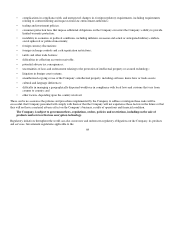Blackberry 2013 Annual Report Download - page 61
Download and view the complete annual report
Please find page 61 of the 2013 Blackberry annual report below. You can navigate through the pages in the report by either clicking on the pages listed below, or by using the keyword search tool below to find specific information within the annual report.
breach a company’s security measures through the actions of outside parties (e.g., hacking or malware) or employee action (e.g.,
error, malfeasance, or otherwise), in an attempt to obtain access to confidential or personal information. Additionally, outside parties
may attempt to fraudulently induce employees, users, partners or customers to disclose sensitive information in order to gain access to
confidential or personal information. Third party applications that are downloaded by a user on their BlackBerry smartphone or
BlackBerry PlayBook tablet could also increase the risk of a potential unauthorized access, misuse or misdirection of confidential or
personal information because some applications require access to such information.
If the security measures implemented by the Company or its partners are breached, or perceived to be breached, or if there is an
inappropriate disclosure or misdirection of confidential or personal information, including as a result of a security breach or virus
relating to hardware or software, the Company could be exposed to litigation, potential liability and regulatory sanctions. Even if the
Company was not held liable, a security breach or inappropriate disclosure of confidential or personal information (or the perception
that such a breach has occurred) could materially damage the Company’s reputation, which is built in large measure on the security
and reliability of the BlackBerry wireless solution, and even the perception of security vulnerabilities in the Company’s products or
services could lead some customers, particularly governmental customers, to reduce or delay future purchases or to purchase
competitive products or services.
In addition, the Company may be required to invest additional resources or change its products and services to protect itself against
damage caused by these actual or perceived disruptions or security breaches in the future and these actions may have a detrimental
impact, for example on cost, the user experience or compatibility with third party products and services. Since the techniques used to
obtain unauthorized access, disable or degrade service, or sabotage systems change frequently and often are not recognized until
launched against a target, or may not be identified until a later time, the Company may not be able to anticipate these techniques, to
implement adequate preventative measures or to remedy them in a timely manner. The risk that these types of events could seriously
harm the Company’s business may increase as the Company expands the number of web-based products and services that it offers,
increases the number of countries where the Company operates, and expands its ecosystem to offer third party products and services
in conjunction with its own.
The Company’s future success depends on its continuing ability to attract new personnel and retain existing key
personnel, the loss of any of whom could adversely impact its business.
The Company’s success is largely dependent on its continuing ability to identify, attract, develop, motivate and retain skilled
employees, including members of its executive team. This is particularly the case in emerging markets where the Company does not
have an existing presence. Competition for highly skilled management, technical, research and development and other employees is
intense and increasing in the wireless communications industry. The Company’s restructuring activities (including headcount
reductions relating to its Cost Optimization Program and continuing efforts to streamline its operations and increase efficiency
through its CORE program), the Company’s governance changes, the challenges faced by the Company over the past two fiscal years
relating to delays in new product introductions, loss of market share, the Company’s share price performance (particularly for those
employees for
54


